By Sean Pearson
Area Size: 24 x 30 yards. Divide area into 3 equal areas of 8 x 15 and an area in front of the goal 24 x 10
Teams: 3 v 3
Time: 20 - 25 Minutes
Objectives:
- To know who is pressure (1st) defender, cover (2nd) defender & third (3rd)
- To recognize when, where & why each play moves
- To stay compact and deny penetration
In a recent session I had low numbers I was planning on doing defending anyway but had to adapt. I ended up having 7 so 4 rotated in being attackers and 3 had sustained time as the defenders. There was no GK for a reason. The reason was to see if the defenders could work hard enough to deny a clear opportunity for a shot as well as deny space for penetration.
Start with some shadow play so the defenders can get used to the movement and when and where to do so. Whichever section the ball is in, the defender in that same section is the pressure (1st) defender. Whichever side the pressure defender shows the attacker, the other 2 defenders take their position. In the diagram below the pressure defender shows to their right. That means that the cover defender is to the right and ‘tucks in’ as close to the pressure defender as possible without moving sections. The balance defender (3rd) comes across but is lower than the cover defender to stop balls going through the 1st & 2nd defender and to help either defender with any penetration from the attackers. Both the 2nd & 3rd defenders take their body position off the pressure defender.
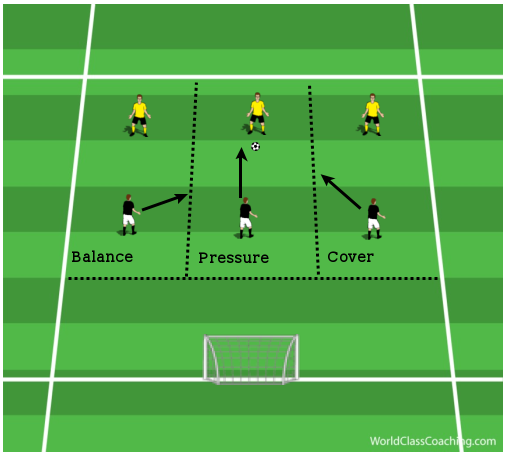
Allow the attackers to pass the ball wide and have the pressure defender force the attacker inside into both the second and third defender. The 3 defenders should be in a curved line.
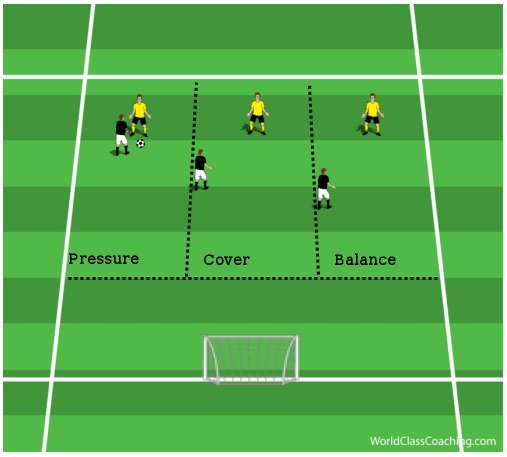
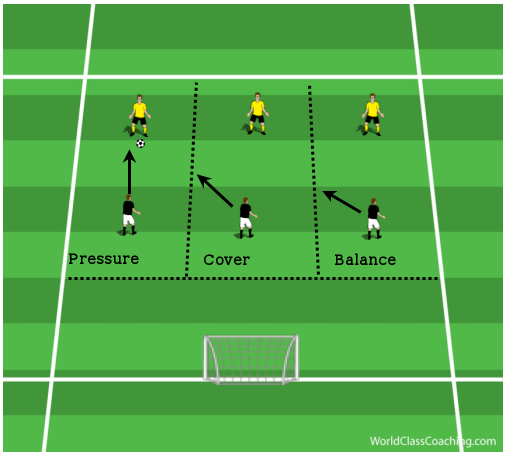
When the ball moves back across to the middle attacker the cover defender becomes the pressure and begins to press as the ball begins to travel. At the same time the pressure defender becomes balance and drops back and in, ‘tucking in’ again in order to support the pressure defender and remain compact to deny penetration.
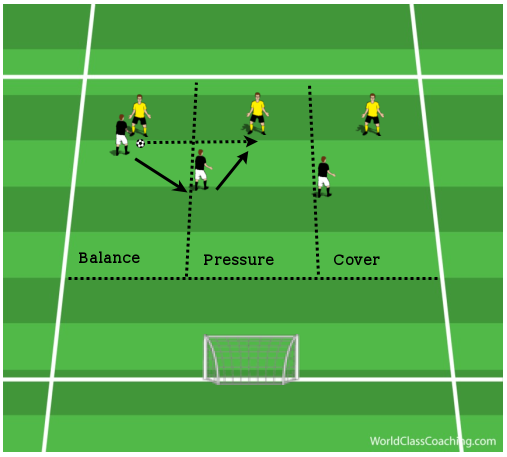
Once the defenders are aware of who should be which defender the attacker’s aim is to beat their individual defender 1v1 or move the ball quickly to beat the compact defense. Like the defenders, the attackers must stay inside their own section, once the ball is past the last line separating the sections they can move everywhere.
To further progress the practice allow the attackers to move sections but they are not allowed to go 2v1 in a section. If an attacker dribbled across sections with the ball, the attacker in that section must switch. The defender travels with the attacker until they switch sections then the pressure defender ‘passes the attacker on’ to the cover defender who becomes the pressure defender. The balance defender stays compact and anticipates a pass across and aims to intercept. If this happens they can play forward to the neutral, who then recycles the ball back to the attackers.
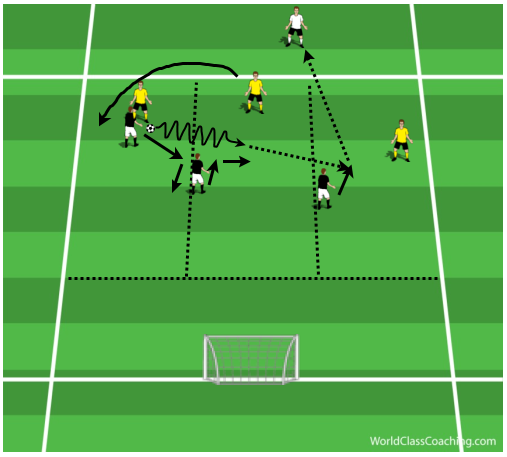
If you wish to advance the session further you can speak to your defenders about their positioning if the pressure defender shows the attacker down the line. Now the cover and balance defenders are slightly deeper to recover if the pressure defender gets beat.
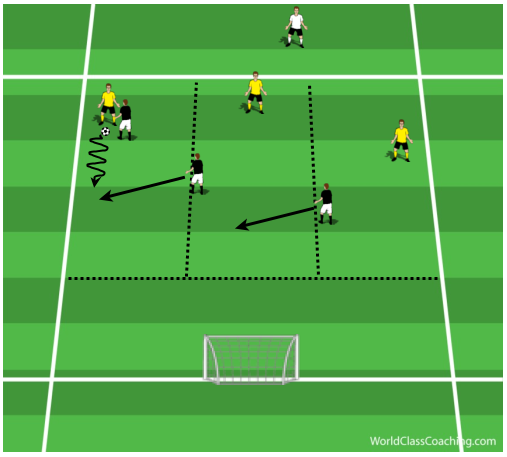
Coaching Points
- Defenders move dependent on where the ball is
- Correct positioning of all 3 defenders
- Correct body position of all 3 defenders
Variations
- Add a goalkeeper
- Have 4 defenders against 3 defenders (an underload)
By Sean Pearson. Sean is also the author Coaching Team Shape in the 3-3-1, Coaching Team Shape in the 4-2-3-1 and Coaching Team Shape in the 4-3-3


